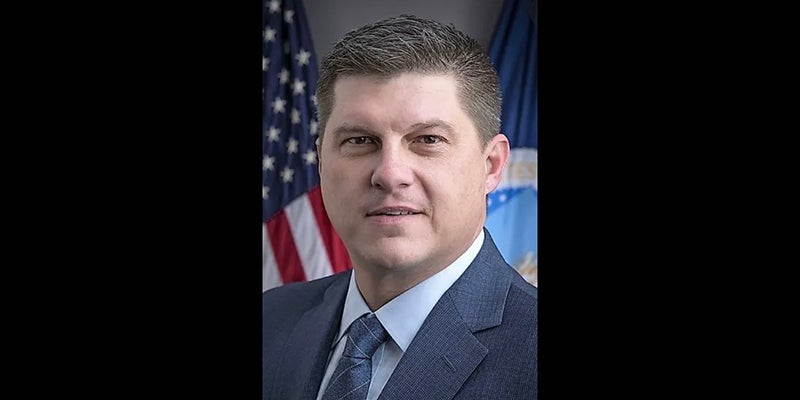Concerns of a school; APS administration, officials meet with local state reps for upcoming session
Published 8:49 am Friday, December 7, 2018
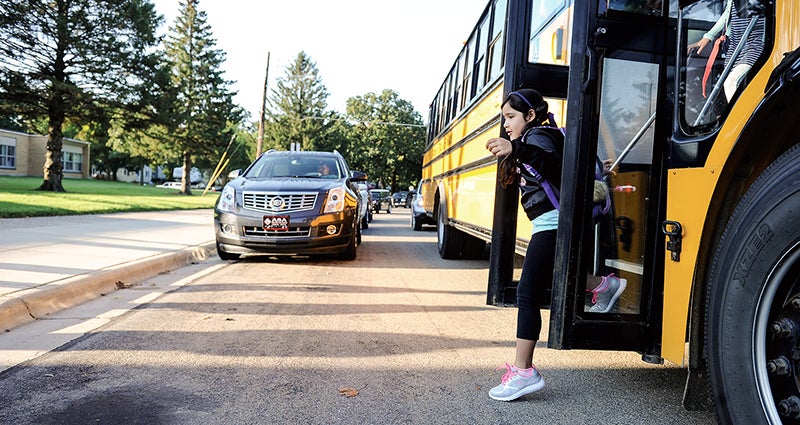
- Austin Public Sch Herald file photo
With the upcoming state legislative session coming in January, Austin Public Schools officials took the time Thursday morning to meet with their local representatives and discuss the future trajectory of education.
Gathered inside the APS District Office conference room were Rep. Jeanne Poppe and Sen. Dan Sparks, as well as several district administrators and officials, including: Superintendent David Krenz, Human Resources Director Mark Raymond, and school board members Peggy Young and Don Leathers.
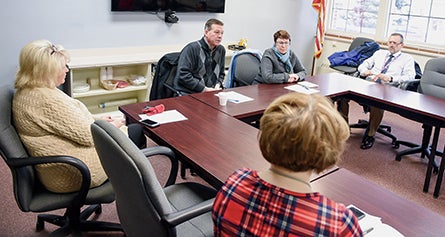
Sen. Dan Sparks and Rep. Jeanne Poppe met with Austin Public Schools administrators Thursday morning to talk about issues and concerns regarding education. Photos by Eric Johnson/photodesk@austindailyherald.com
This upcoming legislative session will be a time of transition, as the GOP majority in the House of Representatives ends with the DFL securing the majority in this past midterm election and will be seeing changes in several different ways, according to Poppe.
“With the DFL majority, that will determine the new Speaker of House, chairs of different committees and more,” she said. “Not to mention, the new governor leading the charge.”
With the election of Governor-elect Tim Walz (DFL), some in the education field were optimistic that many of their concerns would be addressed with a governor who has a two-decade background in education as a school teacher in Mankato, and would understand the needs of the classroom and its students and teachers.
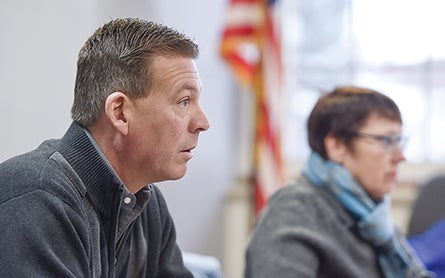
Sen. Dan Sparks listens to a concern during a meeting with Austin Public School officials Thursday morning.
“Things are looking good for education issues,” Sparks told APS officials and administrators. “Walz has proven that he’s about working together at the table and that education is a top priority for him.”
Statewide, there were chronic shortfalls in school funding, which was caused by underfunded state and federal mandated services for special education students and English language learners, along with allocations that haven’t kept up to speed with inflation and would be one of the major issues the education sector hopes the state government would keep a high priority going into the legislative session.
Here are some of the topics that educators touched upon:
Special Education transportation
One of the main focuses of Thursday’s meeting was the discussion of transportation and asking for additional funding in special education, as well as to alleviate some of the expenses that come from transporting students to other districts for services.
When a parent chooses to open enroll their child who had an Individualized Education Program (IEP) to another district under the state’s open enrollment statute, the IEP includes special education transportation to and from school, while the school district offers transport of the student from the district’s boundary to the school, according to the Pacer Center.
Transportation usually falls onto responsibility of the resident’s district, which is the school district in which a student lives. If the IEP team places a student in a different district, then the resident’s district is responsible for the transportation, unless the student is placed in any other school by anyone else (parent, court, human service agency). Then the resident’s district may not be responsible.
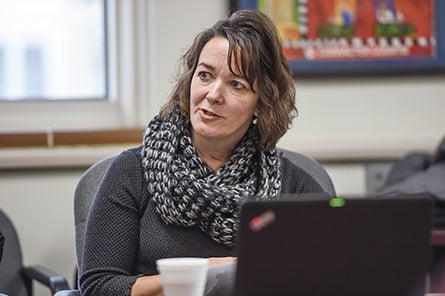
Sheri Wildrodt talks about the concerns of transportation in special education during a meeting with Sen. Dan Sparks and Rep. Jeanne Poppe Thursday.
However, transportation costs in these cases can be burdensome for some school districts, and was a significant focus in the discussion. After an IEP student is accepted for open enrollment, families also have the option of requesting bus transportation from an existing bus stop within the regular attendance zone of the nonresident district, according to the Minnesota Department of Education.
“We are asking for increased educational efficiency,” said Sheri Willrodt, director of special services. “There is inequity when it comes to transportation needs, especially for special education students and families. … transportation is not cheap.”
“The funding formula is always a constant conversation,” Krenz added.
Racial Designation
Starting next school year, school districts statewide will be sending out forms regarding the ethnic and racial demographic designations during registration.
Schools are required to report ethnicity and race to the state and to the U.S. Department of Education. Since recent changes to Minnesota state law, Minnesota disaggregates each category into further subgroups to represent student populations, according to Corey Haugen, director of research evaluation and assessment.
However, Haugen stated that this type of data (while may be of some use to larger districts in Minnesota) many smaller districts would not have the student populations to “break down further” into categories and that this type of information gathered would not be useful to instruction or education in Austin.
“It does not help local districts,” Haugen said. “It is not a valuable metric in education.”




